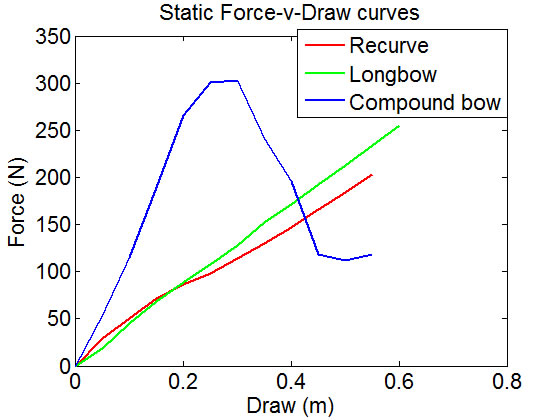Force draw bow arrow dynamics homework bower
Table of Contents
Table of Contents
Are you struggling with drawing force diagrams? Do you find it difficult to understand the concepts of net force and resultant force? Drawing force diagrams is an essential part of physics and engineering, but it can be challenging to master. However, with the right guidance, anyone can learn how to draw force diagrams with ease. In this article, we will guide you through the process of drawing force diagrams and teach you how to master this crucial skill.
Pain Points
Many students struggle with drawing force diagrams because they find it difficult to understand the basic concepts of forces, net force, and resultant force. They may also struggle with determining the right direction and magnitude of forces. Additionally, some may find it challenging to visualize the forces and represent them accurately on paper.
Answer
The key to mastering the art of drawing force diagrams is to start with the basics. Firstly, it’s vital to understand the fundamental concept of forces. Forces are vector quantities that can change an object’s motion. They have direction, magnitude, and point of application. Secondly, it’s important to understand the concept of net force. Net force is the vector sum of all forces acting on an object. If the net force is zero, the object remains in a state of rest or uniform motion. Finally, we need to understand the concept of the resultant force. Resultant force is the single force that has the same effect on the object as all the forces acting on it.
Summary of Main Points
To draw an accurate force diagram, you need to follow the steps below:
- Identify and label all forces acting on the object.
- Choose an appropriate scale and draw a coordinate system.
- Draw a vector representing each force, with an arrow in the direction of the force and a length proportional to its magnitude.
- Label each vector with the force it represents and its magnitude.
- Draw the vector sum of all forces, which represents the net force acting on the object.
- Identify the resultant force and label it accordingly.
How to Draw Force Diagrams
When I was first introduced to drawing force diagrams, I found it difficult to grasp the concept of net force. One of the ways that helped me was to break down each force into its horizontal and vertical components. This method makes it easier to visualize the forces as vectors and represents them on paper accurately.
 For instance, consider the example below, where an object is acted upon by two forces, 5N acting at 60° and 3N acting at an angle of 120°. Firstly, begin by drawing a coordinate system and choosing a suitable scale. Secondly, break down each force into its horizontal and vertical components. Finally, add the vectors and determine the net force acting on the object.
For instance, consider the example below, where an object is acted upon by two forces, 5N acting at 60° and 3N acting at an angle of 120°. Firstly, begin by drawing a coordinate system and choosing a suitable scale. Secondly, break down each force into its horizontal and vertical components. Finally, add the vectors and determine the net force acting on the object.
The Importance of Direction and Magnitude
One of the most essential aspects of drawing force diagrams is correctly determining the direction and magnitude of the forces. The direction of the force determines where the object will move, while the magnitude of the force affects how much the object will move. A force acting in the opposite direction can cancel out the previous force, leaving a net force of zero, resulting in an object remaining stationary or in uniform motion.
 Common Mistakes to Avoid
Common Mistakes to Avoid
While drawing force diagrams, many students make common mistakes that can lead to incorrect solutions. One of the most frequent errors is not drawing all the forces acting on the object. It’s essential to identify and label all forces acting on the object, including those due to contact forces such as friction, tension, and normal forces. Additionally, choosing the wrong scale can result in inaccurate solutions.
Question and Answer
Q: What is the importance of drawing force diagrams?
A: Force diagrams help us understand the types of forces acting on an object and their effect on its motion.
Q: How can I determine the direction of the forces?
A: The direction of the force is determined by the direction of the arrow used to represent it.
Q: What happens when the net force acting on an object is zero?
A: When the net force is zero, the object remains in a state of rest or uniform motion.
Q: Why is it important to label each vector with its force and magnitude?
A: Labelling each vector helps us differentiate between various forces and ensures our calculations are accurate.
Conclusion of How to Draw Force
Mastering the art of drawing force diagrams is crucial for physics and engineering students. By understanding the fundamental concepts of forces, net force, and resultant force, we can accurately represent the forces and the effect they have on the motion of an object. Following the steps outlined above and avoiding common mistakes, we can draw force diagrams with ease and precision.
Gallery
Engin1000 / Final Prototype DSB

Photo Credit by: bing.com / force draw dsb prototype final engin1000 cam
Drawing Force Diagrams And Finding The Resultant Net Force - YouTube

Photo Credit by: bing.com / force vector diagrams drawing resultant vectors air finding getdrawings
Dynamics And Vibrations - Homework

Photo Credit by: bing.com / force draw bow arrow dynamics homework bower
Drawing Force Arrows And Explaining Them - YouTube

Photo Credit by: bing.com / force arrows drawing
How To Draw Force Diagrams - YouTube

Photo Credit by: bing.com / force draw diagrams





